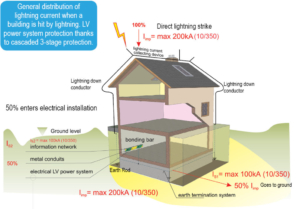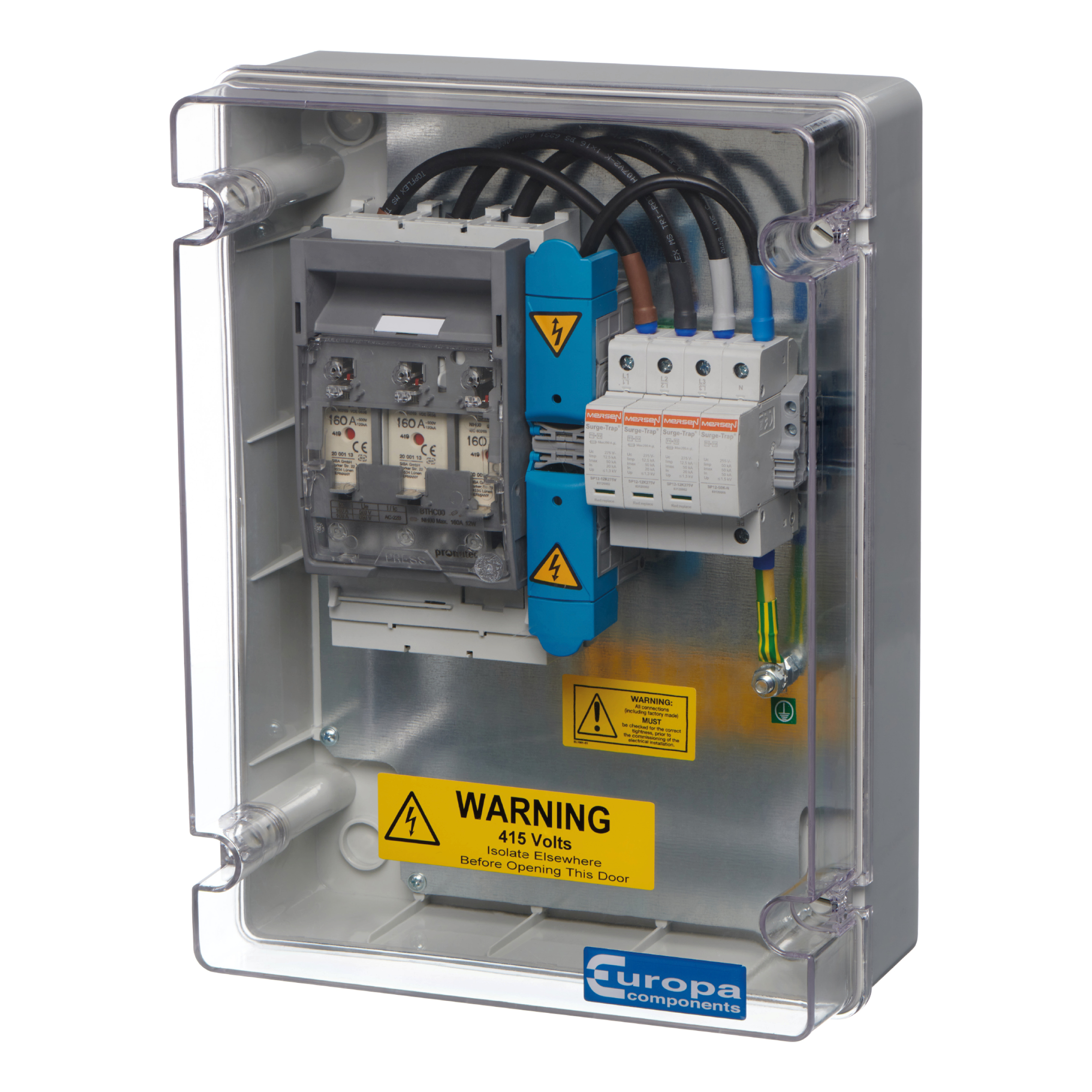A thought process that I was wondering if others had also pondered:
Consumer units with preinstalled Type 2 SPDs have become a very common sight since the 18th edition has more or less mandated them, with almost every manufacturer offering them by default across their range now. These are generally single module width plug in devices that sit to the right of the main switch and are fed via a 32A MCB just to the left of the main switch.
The question though, is what to do when a property is fed from a overhead line and is on a TT earth. Regulations would suggest a Type 1 SPD is required for overhead feed as lightining strike is a possibility. The problem is that Type 1 SPDs are 1) 5x the cost than Type 2 SPDs and are always double width. This means that if a standard Main Swich CU is fitted, they would not fit in the space to the right of the Mains Switch without moving everything along, loosing a bus bar position and misaligning the supports for the supply tails (certainly required for TT earth property), and module labelling etc.
There is precious little evidence of Type 1 SPDs being supplied or provisioned for in CUs, and most "Disconnects with Surge Protection" that could be put in line before the CU are also often only Type 2. One would think this would be a very common problem as many properties are fed by overhead lines, or is my interpretation of what constitutes an overhead line too literal - do they mean miles of rural line to a remote farm shack only?
I have a property in mind with at most 75ft of overhead line from a pole, which itself is in the local DNOs transformer enclosure. Washing lines have been known to be longer... Admittedly, the pole of course also feeds other properties and these feeds go for 1/2 mile down the road but my ponderance on what others do on overhead line properties persists. Is it a common occurance to see a readily available Type 2 SPD CU installed in domestic dwellings, perhaps if the risk of lightning strike seems minimal, or is the Type 1 SPD on overhead line feed rigerously abided by and if so how is it typically executed?
What is the feeling about SPDs on a full RCBO CU, where the SPD alone is on a MCB and thus has no RCD protection on its connection wires or operation? If the device fails on its gas tube a continious earth leakage could occur and if a MOV fails slightly could this not consume lots of power over a long term with little oversight? Are SPDs more of a risk or an assured solution in peoples minds?
Thoughts and ponderances please
Consumer units with preinstalled Type 2 SPDs have become a very common sight since the 18th edition has more or less mandated them, with almost every manufacturer offering them by default across their range now. These are generally single module width plug in devices that sit to the right of the main switch and are fed via a 32A MCB just to the left of the main switch.
The question though, is what to do when a property is fed from a overhead line and is on a TT earth. Regulations would suggest a Type 1 SPD is required for overhead feed as lightining strike is a possibility. The problem is that Type 1 SPDs are 1) 5x the cost than Type 2 SPDs and are always double width. This means that if a standard Main Swich CU is fitted, they would not fit in the space to the right of the Mains Switch without moving everything along, loosing a bus bar position and misaligning the supports for the supply tails (certainly required for TT earth property), and module labelling etc.
There is precious little evidence of Type 1 SPDs being supplied or provisioned for in CUs, and most "Disconnects with Surge Protection" that could be put in line before the CU are also often only Type 2. One would think this would be a very common problem as many properties are fed by overhead lines, or is my interpretation of what constitutes an overhead line too literal - do they mean miles of rural line to a remote farm shack only?
I have a property in mind with at most 75ft of overhead line from a pole, which itself is in the local DNOs transformer enclosure. Washing lines have been known to be longer... Admittedly, the pole of course also feeds other properties and these feeds go for 1/2 mile down the road but my ponderance on what others do on overhead line properties persists. Is it a common occurance to see a readily available Type 2 SPD CU installed in domestic dwellings, perhaps if the risk of lightning strike seems minimal, or is the Type 1 SPD on overhead line feed rigerously abided by and if so how is it typically executed?
What is the feeling about SPDs on a full RCBO CU, where the SPD alone is on a MCB and thus has no RCD protection on its connection wires or operation? If the device fails on its gas tube a continious earth leakage could occur and if a MOV fails slightly could this not consume lots of power over a long term with little oversight? Are SPDs more of a risk or an assured solution in peoples minds?
Thoughts and ponderances please
Last edited:




